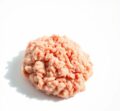Ever made a slushie, only to realize it’s melted faster than you could enjoy it? Don’t worry, you’re not alone! If you’ve ever wondered how to bring your slushie back to life after it’s lost its icy charm, then you’ve come to the right place. Refreezing a slushie is not only possible, but it’s also pretty simple-when done right. This guide will walk you through the steps, tips, and tricks to bring your frozen drink back to its frosty, slushy glory. Whether you’re dealing with a DIY creation or a store-bought treat, we’ve got the scoop on how to make sure your slushie stays cool for as long as you need!
Can You Refreeze Slushie?

Yes, you can refreeze a slushie-but with a few caveats that are worth understanding.
Slushies are unique in texture because they exist in a semi-frozen state-a finely balanced suspension of ice crystals and flavored liquid. When you leave a slushie out and it melts completely, the suspension breaks down. What you’re left with is a sugary, syrupy liquid. At this stage, refreezing is technically possible, but restoring the original slush-like consistency becomes a bit tricky.
Unlike water, which freezes uniformly, the sugary content of slushies lowers the freezing point, leading to uneven freezing. When you refreeze, you don’t get the same fine ice crystal texture that was churned during the original freezing process (often created by continuous agitation in commercial machines). Instead, large, coarse ice crystals can form, resulting in a more crunchy or icy texture-not the velvety slush experience most people crave.
So, can you refreeze a slushie? Yes. Will it be the same as before? Not quite. But all is not lost if you take the right approach.
How To Refreeze Slushie?
If you’re determined to bring your slushie back to life after it’s melted, here’s how to do it the right way for the best possible results:
-
Stir or Blend First:
Before refreezing, give the melted slushie a vigorous stir or, even better, pour it into a blender and pulse it for a few seconds. This helps reintroduce air and ensure the ingredients are properly mixed-important since the heavier syrup tends to settle at the bottom.
-
Add Ice (Optional but Helpful):
If the flavor is too intense due to evaporation, or if you want to recover that light texture, add a handful of crushed ice before blending. This dilutes the mix slightly but brings back the "slush" feel once frozen.
-
Freeze in a Shallow Tray or Freezer-Safe Bag:
Transfer the blended mixture into a shallow container or freezer-safe zip-top bag. These provide more surface area, helping the mixture freeze more evenly. Avoid using deep cups or bottles, which encourage uneven freezing and large ice formation.
-
Agitate During Freezing:
For best results, stir the mixture every 30-60 minutes during the first few hours of freezing. This mimics the motion of a slushie machine and helps prevent large ice crystals from forming. After about 3-4 hours, you should see a respectable slushie consistency.
-
Blend Again Before Serving:
If the texture still isn’t quite right, give it a quick spin in the blender before serving. This breaks up any larger ice chunks and helps recreate a smoother consistency.
Quality Impact
Let’s be honest-while refreezing works, the quality does take a hit. Here’s what typically changes:
-
Texture Degradation:
The biggest impact is the texture. Original slushies rely on constant motion to create tiny, uniform ice crystals. Without agitation during refreezing, you’re likely to end up with a grainy, crunchy texture rather than a smooth, soft slush.
-
Flavor Concentration or Dilution:
If you don’t stir before refreezing, you risk uneven distribution of syrup and water, which can cause flavor separation. The top may taste bland and watery, while the bottom may be syrupy sweet. Worse, if melted too long, some of the water may evaporate, resulting in an overly sweet mixture.
-
Color Separation:
Artificial dyes used in slushies can settle when the drink melts. This can make the refrozen slush look patchy or less appealing visually.
-
Mouthfeel and Temperature Perception:
Proper slushies feel cold but not painfully icy. A poorly refrozen slushie can contain sharp ice shards that make the experience less enjoyable. Plus, the refined texture is part of the reason slushies seem colder than regular ice drinks-lose that, and the refreshment factor drops.
In the whimsical world of frozen drinks, slushies hold a special place-playful, nostalgic, and deeply satisfying on a hot day. While you can refreeze a slushie, achieving that magical, smooth consistency again takes a bit of effort and compromise.
For casual enjoyment, especially if you’re not too picky about texture, a refrozen slushie can still hit the spot. But if you’re after the real-deal, fluffy consistency, nothing beats a freshly churned slush from a proper machine or blender.
So next time your slushie melts, don’t toss it-treat it like a frozen science experiment. With a little technique and care, you can enjoy a second round of icy delight, even if it’s not quite as perfect as the first.
🧊 Is It Safe To Refreeze A Slushie?
Refreezing a slushie is generally safe-under the right conditions. A slushie is essentially a semi-frozen mixture of water, sweeteners, flavorings, and sometimes carbonation. The main concern when refreezing is not necessarily about bacterial growth (as with meats or dairy), but rather about maintaining the integrity of the slushie’s texture and avoiding ingredient separation.
The safety of refreezing a slushie depends on:
- How long the slushie has been sitting at room temperature.
- Whether it has been exposed to contaminants (e.g., drinking directly from the container or using dirty utensils).
- The ingredients used. Slushies with dairy, fresh fruit, or perishable syrups are more sensitive to bacterial growth and should not be refrozen if left out for extended periods.
If the slushie has been kept in a clean, chilled environment and only partially thawed, it is typically safe to refreeze. However, the texture may be altered.
⚠️ Signs That A Slushie Should Not Be Refrozen
Before popping that half-melted slushie back into the freezer, look for these warning signs:
- Strange Smell: A sour or fermented odor can indicate spoilage, especially in slushies with fruit or dairy content.
- Discoloration: A change in color can point to oxidation or microbial growth. Brownish hues in once-bright fruit slushies, for example, are a red flag.
- Separation of Ingredients: If the water has completely separated from the syrups or flavorings, it may indicate that the emulsion has broken down-potentially leading to poor refreezing results.
- Unusual Texture: If the slushie has become syrupy or slimy instead of icy and granular, it’s best to discard it.
- Extended Time at Room Temperature: If your slushie has been out for more than 2 hours in a warm environment, it’s safer not to refreeze due to the potential for bacterial growth.
Common Refreezing Mistakes
It’s easy to make missteps when trying to salvage a slushie. Here are the most common pitfalls:
- Refreezing After Full Meltdown: Once a slushie fully melts and has been sitting out, especially if it contains dairy or fruit, its structural integrity is compromised, and bacteria may proliferate.
- Ignoring the Container: Refreezing in its original store-bought container-especially if it’s thin plastic or a paper cup-can result in cracks or leaks. Always transfer to a freezer-safe container.
- Repeated Refreezing Cycles: Every time a slushie thaws and refreezes, ice crystals grow larger and more jagged, destroying the delicate icy texture and potentially breaking down flavors.
- Not Stirring Before Refreezing: A slushie that has started to separate should be stirred or blended before being placed back in the freezer. This helps preserve the even distribution of ingredients.
- Adding Carbonated Beverages: If you’re experimenting and adding soda to your slushie, remember that carbonation doesn’t fare well when frozen and thawed repeatedly. It can lead to strange fizzing, loss of flavor, and texture degradation.
🧠 Tips And Tricks For The Perfect Refreeze
If you’re committed to refreezing your slushie without turning it into a solid block of disappointment, here are some pro tips:
- Pre-Chill Before Refreezing: Let the slushie cool in the fridge first before placing it in the freezer. This gradual drop in temperature helps reduce ice crystal formation.
- Use a Blender: Before refreezing, blend the slushie to reincorporate the ingredients. You can even add a splash of juice or flavored water to freshen it up.
- Freeze in Portions: Use ice cube trays or silicone molds to portion your slushie. This allows you to thaw only what you need, minimizing repeated freeze-thaw cycles.
- Add a Touch of Sugar or Corn Syrup: This helps prevent large ice crystals from forming and keeps the texture smooth. It’s especially helpful for homemade slushies.
- Store in Airtight Containers: Prevent flavor loss and freezer burn by using sealed, freezer-safe containers. Label with the date if you plan to store it long-term (though slushies are best consumed within a week of refreezing).
Conclusion
Refreezing a slushie can be safe, but it requires attention to detail and a little know-how. When done correctly, it’s a great way to avoid waste and extend the enjoyment of your icy treat. Always prioritize safety-watch for signs of spoilage and know when it’s better to say goodbye than refreeze. With the right techniques and a splash of care, your slushie can make a satisfying encore performance right from your freezer.
So next time that neon-colored drink starts to melt on the counter, you’ll know exactly what to do: stir, chill, freeze-and sip again.


